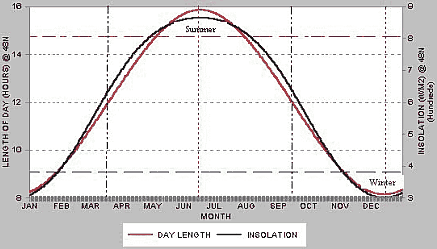 |
 |
| Home | Welcome | What's New | Site Map | Glossary | Weather Doctor Amazon Store | Book Store | Accolades | Email Us |
 | |||||||||
Weather Almanac for May 2000CELEBRATING MAY DAYI had originally planned another topic for this month's Almanac (which I will get to a little later in the month) but a recent email from Dr Kathleen Jenks, Professor in the Mythological Studies Department, Pacifica Graduate Institute, Carpinteria, CA, reminded me that May 1st was another of the important cross-quarter days in the folk calendar. The purpose of her email was to ask me what I might be including on my website on the festival of Beltane. (I strongly recommend visiting Dr Jenks' site Mything Links for almost anything about mythology and folk rituals, particularly her pages on Floods, Storms, Rainbows, & Other Weather Wonders and her quarterly celebrations of the seasons. I have often referred to her site in locating weather and seasonal stories and mythology for use in the Weather Doctor.) I have to admit I did not know at the time what Beltane was, but soon was educated on the subject. I, like most of us, know it more as May Day rather than as Beltane or one of its other names (Walspurgisnacht, Roodmas, Floralia). Those of us who grew up or lived during the height of the Cold War, likely remember May Day as the day when Communist countries would parade in celebration of the working class, augmenting the show of worker solidarity with the latest armaments and strutting troops marching through the streets of Moscow and Beijing. It was a shame that May Day became known to us in this way because originally May Day celebrated life more than death: "April Showers bring May Flowers." The folk celebrations of early May in Europe began as a celebration of life and fertility, the time for planting of crops and vegetable gardens, and for the regeneration of life that comes with increased sunlight. In fact, Beltane is derived from the Celtic word for "brilliant fire."Beltane or May Day is one of those four cross-quarter days of the year that we no longer celebrate with the vigor that our ancestors did, particularly those living in the northern temperate and sub-polar regions. While the media today still makes much fuss about the coming of the first days of Spring, Summer, Autumn and Winter as defined by the solar position in the sky, these days are, in effect, the mid-season days in the solar calendar. And the solar calendar would be the one most followed by the common folk whose lives focused on hunting and agriculture. I have written about the first cross-quarter day of the year, Groundhog Day, in the February 1998 Almanac where I show its place in the solar cycle and defined the solar seasons. For those who may not remember it, the solar seasons are defined with the quarter of the year having the most potential solar energy and longest days as Solar Summer; and the quarter having the least potential solar energy and shortest days as Solar Winter. The transitional seasons are Solar Spring and Autumn (or Fall). (The sun springs from short to long days and then falls back from long to short.) It is the four cross-quarter days that define the starting and ending dates of the solar seasons. 
On a planet without oceans or other large bodies of water, the temperature seasons would likely follow the solar seasons fairly closely. On Earth, the thermal season lags the solar season by about a month due to the slower heating of the largest water bodies. Thus, the astronomical seasons fit the thermal seasons a little better than the solar strength or day length. Climatologists take another approach in order to also incorporate our standard calendar by defining March-April-May as Spring; June-July-August as Summer, etc. So, if we use the solar cycle, which would be most apparent cycle to the old agrarian communities of Europe and North America, May 1st is the approximate beginning for the start of Solar Summer. This day starts the quarter of the year with the greatest potential sunlight and the longest days north of the Tropic of Capricorn. Many of the so-called folk or pagan festivals and days of observance were tied to the solar and lunar cycles and the great cycles of life. By the start of May, most trees are in full leaf, many Spring flowers are in bloom and the Earth is brimming with both plant and animal life taking advantage of the high sun levels and ever warmer temperatures. The longer daylight hours allow folks to take advantage of the natural light for both work and play. I hope you all have a splendid and flourishing Solar Summer season in 2000. Enjoy those extra hours of natural light from our prime star, Ol' Sol. Learn More From This Website:
Myth*ing Links: MAY DAY:
SCIENCE, HISTORY & LORE
Keith C. Heidorn, PhD, THE WEATHER DOCTOR, May 1, 2000 ©2000, Keith C. Heidorn, PhD. All Rights Reserved. Correspondence may be sent via email to: see@islandnet.com. |
|||||||||
 |
To Purchase Notecard, |
Now Available! Order Today! | |
 |
 |
NEW! Now |
The BC Weather Book: |


